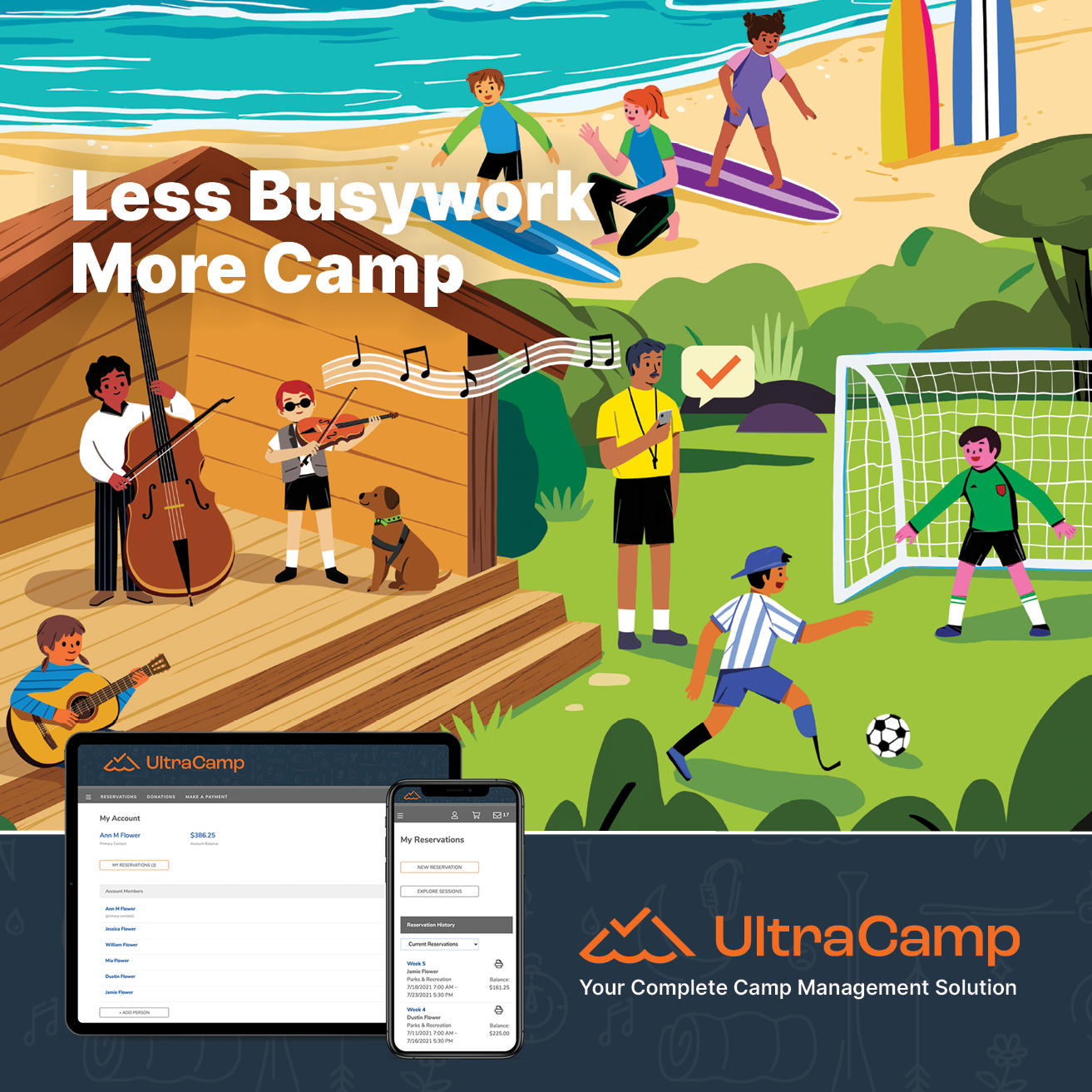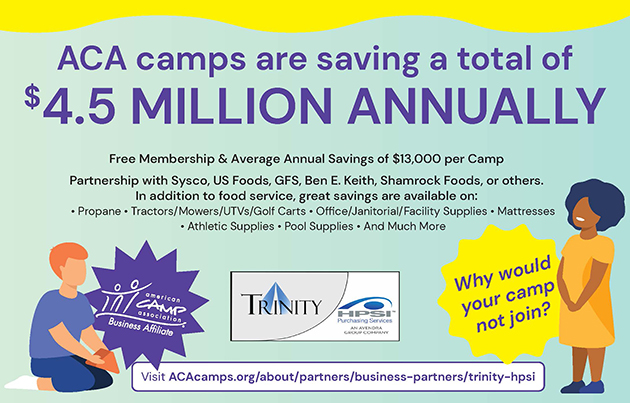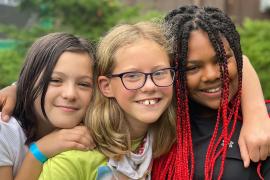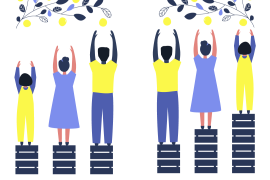For more than 20 years, I have worked in the world of special education, inclusion, and disability advocacy in schools and camp. For a time, I was an inclusion and special needs director at one of North America’s biggest overnight camps, overseeing the inclusion program for participants from 6 to 30 years old. By all rights, such career experience in disability inclusion, along with my training makes me feel confident, at least on most days, that I know what I’m talking about. I even have firsthand experience, having been diagnosed with attention deficit hyperactivity disorder (ADHD) inattentive type in the 1980s.
By reflecting on the training available to me at the time, as well as what worked for me when I struggled with ADHD and social life, I have found some successful methods for helping my neurodiverse campers thrive. However, I’ve also become aware of a major element missing in my training. That missing element was — and is — the autistic community’s voice.
Buy-in by the participant is critical when accommodating a neurodiverse camper or young adult staff member who may struggle at camp. So be intentional about asking for feedback prior to or during any precamp or off-season meetings that address inclusion plans. Not only will campers with disabilities be on board with your “camper success plans” when they have taken part in their creation, but they can also be amazingly insightful about their struggles and the kind of aid that will truly help them. The more the child, teen, or adult with the disability is included in these important conversations, the more successful they will be at camp.
When planning for summer, your camp board and committees can have a significant impact. Do you have board members or committee members who are autistic? Parents of neurodiverse campers can also offer important perspective and should be included — however, this is not a substitute for firsthand experience. Those voices that are so helpful in planning for their own needs at camp could also be instrumental in envisioning the future of your neurodiverse-friendly programming as they become adults and potential board members.
Have you read about the debate between Autism Awareness Month and Autism Acceptance Month? According to Neurodiversity News (2022), “Every year in April, an international tradition is celebrated that autistic people dread, and that’s Autism Awareness Month. In response, autistic people created Autism Acceptance Month, as acceptance promotes action, while awareness is passive.”
Here is how I reconcile both of these objectives. The first step addresses autism or neurodiversity awareness. In the camp world, I think we do this beautifully. We are aware of all kinds of disabilities we may see at camp. We are aware of autism, ADHD, and physical challenges, not to mention the mental health struggles such as anxiety and depression that are becoming more prevalent at our camps as well as in the world outside.
How about acceptance? If we accept that neurodiversity is a naturally occurring difference in how brains function at their highest potential, does it still make sense to restrict our inclusion initiatives to those campers who are easy to accommodate — the ones we can accommodate without inconveniencing their neurotypical peers? What about those who enjoy sharing long lists of facts instead of back-and-forth conversations? What about those who can’t regulate their voices or have vocal stims at night when others want to sleep? What about campers who are nonverbal and may try to communicate needs with physical aggression? Do we accept these campers?
And how about campers who were model inclusion program participants and then, as teens, want to join your CIT program or be staff alongside their neurotypical peers? Do we accept them as staff?
And as previously mentioned, when these campers and staff members become older adults, will we engage them as board and committee members?
Thinking It Through
Some of the programs, tools, and techniques camps use in inclusion programs end up being not so accepting. To further explain, one of the most common struggles among the neurodiverse is social skills. These deficits can show up in a big way at camp, which by its nature is intentionally very social. When a camper or an adult inclusion program participant is being misinterpreted as rude, one might use the “expected vs. unexpected behavior” model. Here is an example:
I am introduced to Timmy at the bus heading to camp. Timmy looks at my name tag and says, “Franki? That’s the weirdest name I’ve ever seen for a girl.” Timmy’s parents turn a few shades of red, mumble apologies, and shuffle off embarrassed. I smile, knowing it wasn’t Timmy’s intention to be rude, and, hey, Mom and Dad, Franki is sort of an unexpected name for a girl. What if Timmy’s parents yelled at him for being rude? Or maybe his assigned counselor pulls me aside and asks, “What do I do when Timmy is rude like that?” So I may model a conversation like this with Timmy and his counselor.
Me: “Hey Timmy, did you notice that your parents were really upset when you said my name was weird for a girl?”
T: “Yeah. But it’s true!”
Me: “Yes, it is an unusual name for a girl. However, do you think saying my name is weird is kind?”
Timmy says nothing.
Me: “Is it expected for a 10-year-old to tell someone they just met that their name is weird? Is it expected that a 10-year-old would hurt the feelings of an adult?”
So what’s wrong with this method? Shouldn’t we help a child understand when they are misunderstood? Wouldn’t that child want to know if they are being rude? Yes, Timmy and children like him can surely benefit from help with neurotypical awareness. The piece that may be missing is awareness on the other side. We should make it our responsibility to help Timmy’s peers and counselor understand his neurodivergent way of communicating. Timmy shared a fact, a truth that he connected with when learning my name. This is the way his brain works. It’s not wrong; it’s just different. In fact, Timmy’s quick observational skills are a strength of his and will be useful in many areas of his life. His community should learn more about him, his particular “brand” of socially communicating, and how accidental rudeness doesn’t always have to be addressed when the underlining intention is to share a fact. And Timmy would also benefit from understanding why his peers often get angry at him when he shares a truth. It must be both if the goal is to move beyond awareness to acceptance.
I spend a significant amount of time reading articles, books, blogs, and Facebook posts from autistic voices in my quest to become more accepting. There is a strong feeling from a large majority of autistic social media content creators that social skills curriculums, like the one that uses “expected vs. unexpected behaviors” do more harm than good. That they’re not neurodiverse affirming, meaning these social skills curriculums are telling those who are neurodiverse to “mask,” to hide who they are in order to fit in and be included. In all honesty, this line of thought has made me go back and rethink just about everything I know and have learned about social skills support.
What’s missing in the conventional social skills model of this concept is Milton’s double empathy theory. According to Spectrum, a source of news and expert opinion on autism research, proponents of this theory “believe that communication breakdowns between autistic and non-autistic people are a two-way issue, caused by both parties’ difficulties in understanding. This ‘double problem’ challenges long-held theories of autism that point to social shortcomings of people with autism as the reason interactions flop” (Zamzow, 2021).
Does it benefit Timmy to understand how something he says may be misinterpreted by a neurotypical camper? Yes. However, truly teaching inclusion and acceptance is to educate our neurotypical community in the way those who are neurodivergent communicate. Neurotypical campers and staff should strive to understand how the neurodiverse in their cabin communicate.
I like to think of this as being aware of all the social styles in our group. If Timmy likes to share facts that relate to a topic, we can use that to give him an opportunity to shine. We can ask questions to discover his special interest and build a cabin activity for which his socializing style is a good fit. This may mean it will be harder for the neurotypical campers in the cabin to participate, but that’s OK; we can support them through that and Timmy can help!
The child bends to the camp (or to neurotypical peers) and the camp bends to the child.
Quite often we ask kids and adults with disabilities to bend to the world around them and forget the and entirely. For example: “Hey, Timmy, I know you don’t like noisy, crowded, hot dining halls, but that’s where your group eats lunch. You can’t eat somewhere else because there is no one to supervise you. However, I have these awesome noise-canceling headphones that you can use in the dining hall, or if it’s too loud for you to focus on your meal, we can pack it up in a to-go box for you to eat outside at your next activity.”
At most camps, this child would be asked to “bend” three times a day in this scenario. We justify this with the fact that most campers love the dining hall, so it wouldn’t make sense to change things for one camper. Or would it?
One camp I worked at had a tradition of doing a silent lunch during its color war games. Teams got points for being the quietest, and you could look around and see smiles on campers’ faces as they worked creatively to nonverbally communicate their need for someone to pass the potato chips. This silent meal was a favorite among campers. Maybe it was novel and fun to play charades during lunch to get what they needed. Perhaps they enjoyed the quiet respite during one of the most stimulating days of the summer. Maybe it was both. Why couldn’t we include a silent lunch then once a session? Or once a week?
Campers bend to camp and camp bends to the campers.
As you begin planning for next summer, where is your camp in its inclusion journey? Are you neurodiversity aware? Are you aware and accepting?
References
- Neurodiversity News. (2022). Autism awareness vs. acceptance. What’s the difference? neurodiversitynews.net/autism-awareness-vs-acceptance-whats-the-difference
- Zamzow, R. (2021, July 22). Double empathy, explained. Spectrum. spectrumnews.org/news/double-empathy-explained/
Franki Bagdade, M Ed, MSW, is an academic and behavioral consultant in her business, FAAB Consulting. Franki has a master’s in special education and a master’s in clinical social work. She has been working with children and teens with “extra needs” for over 20 years. Franki served on the director teams of one of the largest residential camps in North America from 2015–2020. She provides professional development for camp staff, educators, and mental health professionals. Franki speaks nationally on mental health topics, inclusion, and parenting. Her book, I Love My Kids But Don’t Always Like Them! hit bookstores in the fall of 2021 and details how she took what she learned from the classroom and the camp cabin and translated it into parenting three very different children. Franki is a contributing author for Metro Parent Magazine (Metro Detroit), Chicago Parent, Autism Parenting Magazine and Today (show) Parenting, as well as her own FAABlog. For daily tips and tools, follow her at facebook.com/faabfranki or visit her website at faabconsulting.com.
Photo courtesy of Camp Juliette Low, Cloudland, GA.




